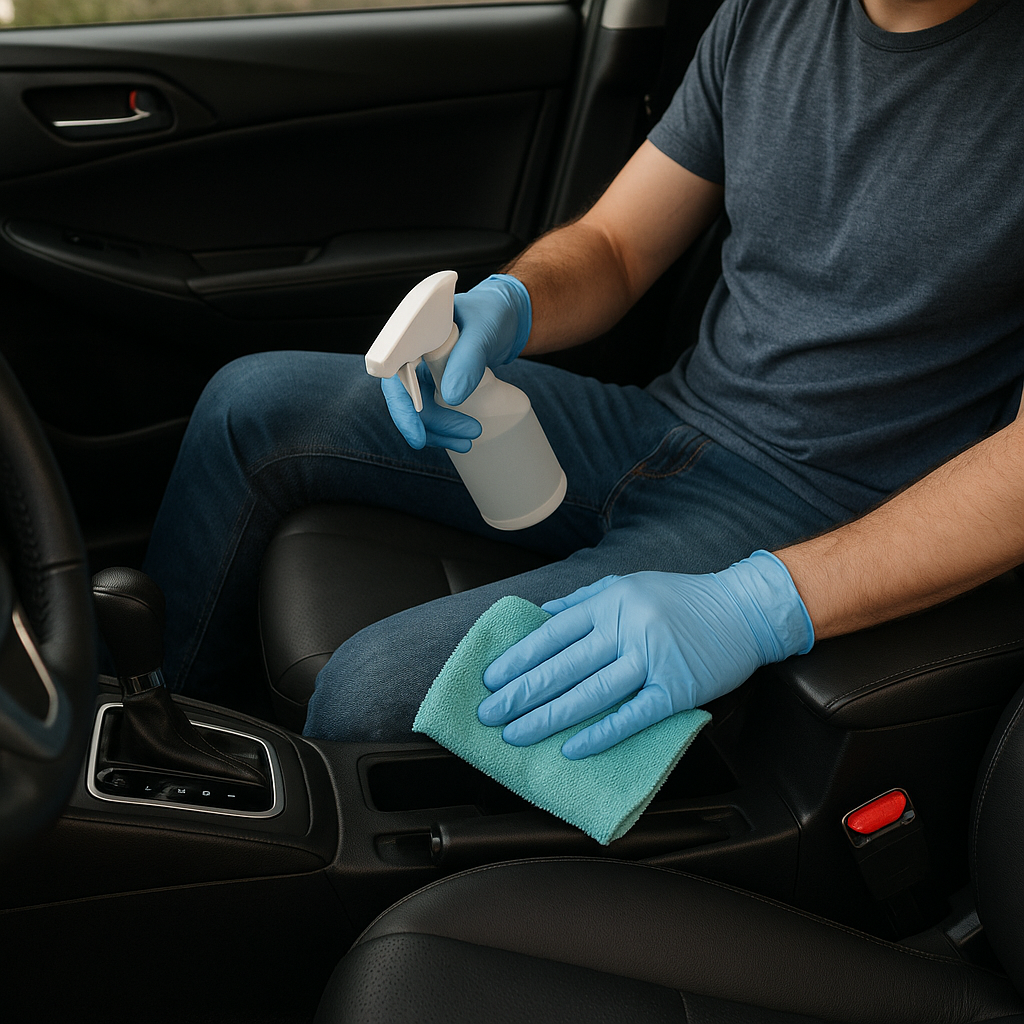Leather car interiors offer a luxurious feel, but they require regular care to retain their appearance and longevity. This guide outlines a simple and effective maintenance routine: clean, condition, and protect, to keep your leather looking fresh and new.
1. Weekly Dusting and Debris Removal
Leather attracts dust, crumbs, and oils from skin and clothing. Weekly vacuuming with a soft-bristle upholstery attachment helps to remove dirt trapped in seams. Follow this with a dry microfiber cloth to wipe down seams and surfaces. This prevents buildup that can lead to scuffs or a dull finish.
2. Light Cleaning Every Four to Six Weeks
Use a slightly damp microfiber cloth to wipe the leather surface lightly. For tougher grime, mix a few drops of mild soap (such as pH-neutral dish soap) with water. Wipe gently, making sure you do not oversaturate the leather, then let it dry fully with windows open to avoid mildew.
3. Deep Cleaning Quarterly
Every three months, perform a deeper clean to remove embedded dirt and oils:
- Vacuum thoroughly first
- Apply a dedicated leather cleaner, sprayed onto a cloth rather than directly onto the leather, to gently lift dirt
- Use circular motions with a clean microfiber cloth
- Once clean, allow the leather to air dry completely before conditioning
4. Conditioning to Maintain Softness and Prevent Cracks
After cleaning, apply a leather conditioner suited for automotive use, ideally with added UV protection. Massage in using circular motions, leave for 10 to 15 minutes, then buff off any excess with a microfiber cloth. This replenishes natural oils and helps protect against sun damage.
5. UV Protection
Sun exposure accelerates fading and drying. Park in the shade when possible, use a windscreen sunshade, and consider window tints. When applying leather conditioner, choose one with UV blockers to reinforce protection.
6. Immediate Spot Treatment
- Blot spills, especially oil, immediately with a soft and absorbent cloth
- For oily spots, sprinkle baking soda or cornstarch and leave for a few hours before brushing away
- For ink stains, carefully dab with isopropyl alcohol on a cotton ball
- For thorn or scratch marks, consider a DIY repair kit or consult a professional
7. Choosing Products
Select pH-balanced, leather-specific cleaners and conditioners free of ammonia or bleach. Recommended products include:
- Cleaner and conditioner kits from Chemical Guys or Weiman
- Leather Honey cleaner and conditioner, which are non-toxic and include UV additive
- Ethos car-specific cleaner and conditioner combo
Avoid using harsh household cleaners like Windex, which can strip the leather and cause cracking or fading.
8. Common Mistakes to Avoid
- Over-cleaning or over-conditioning, which can leave residue or create an unnatural shine. Stick to quarterly deep routines unless the leather feels dry
- Applying products too frequently may cause buildup. Always buff off any excess
- Using stiff brushes. Opt for soft microfibres and gentle pads to prevent scratches
9. Seasonal Tips
In winter, frequent conditioning helps counteract drying from cold temperatures and road salt, which can cause expensive damage. In summer, prioritise UV protection and parking in shaded areas.
10. Maintenance Summary
| Task | Frequency | Tools/Products |
|---|---|---|
| Dust and vacuum | Weekly | Soft-bristle vacuum, dry microfiber cloth |
| Light clean | Every 4 to 6 weeks | Damp cloth, mild soap or leather cleaner |
| Deep clean and condition | Quarterly | Leather cleaner, conditioner with UV block |
| UV protection | With conditioner | Windscreen shade, tinted windows |
| Spill treatment | As needed | Cloth, baking soda, isopropyl alcohol |
Conclusion
A consistent routine of light cleaning, deep cleaning, conditioning, and UV protection will preserve both the appearance and structural health of leather interiors. Use quality pH-balanced products and gentle tools, avoid harsh household cleaners, and adapt your care seasonally to ensure your car’s leather remains looking like new for years to come.

